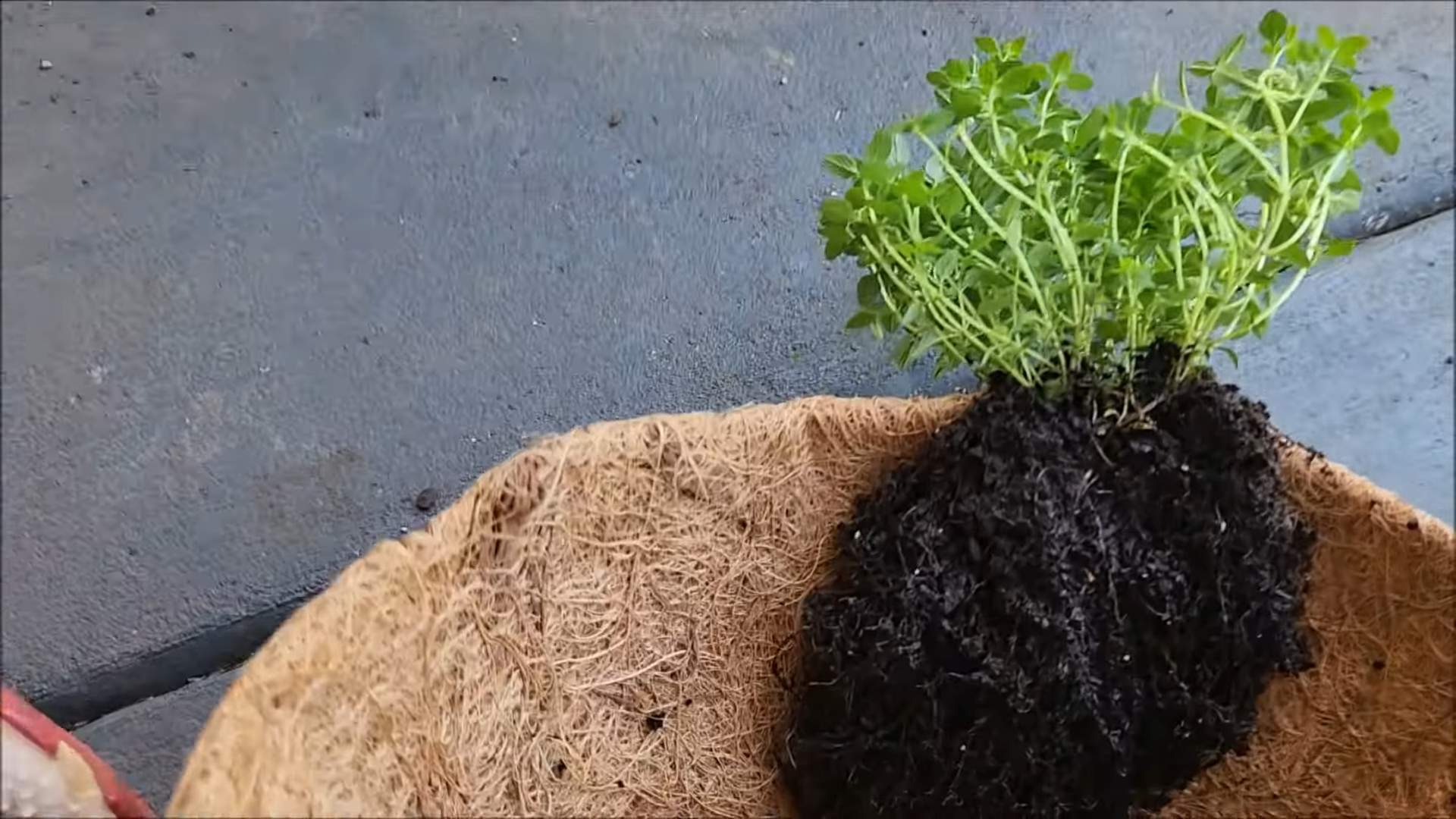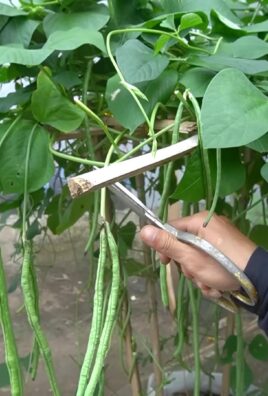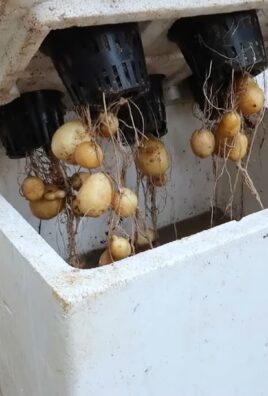Growing thyme indoors can feel like a secret superpower for any home cook or gardening enthusiast! Imagine having fresh, fragrant thyme readily available, no matter the season, right at your fingertips. Forget those sad, dried-up jars from the supermarket – we’re talking vibrant, flavorful thyme that elevates every dish.
Thyme, with its rich history stretching back to ancient Egypt where it was used for embalming, and Greece where it symbolized courage, has always been valued for its potent medicinal and culinary properties. For centuries, cultures around the world have cherished thyme, and now, you can easily bring this historical herb into your own home.
But let’s be honest, sometimes bringing the outdoors in can be a little tricky. That’s where these DIY tricks and hacks come in! I’ve compiled a collection of simple, effective methods to ensure your indoor thyme thrives. Whether you’re a seasoned gardener or just starting out, you’ll find these tips invaluable. We’ll cover everything from choosing the right pot and soil to mastering the art of watering and providing adequate sunlight. Why struggle with lackluster herbs when you can easily master growing thyme indoors and enjoy a constant supply of fresh flavor? Let’s get started!

Growing Thyme Indoors: A Beginner’s Guide to Fresh Herbs Year-Round
Hey there, fellow plant enthusiasts! Are you dreaming of fresh, fragrant thyme at your fingertips, even when the snow is falling outside? Well, you’re in the right place! I’m going to walk you through everything you need to know to successfully grow thyme indoors. It’s easier than you might think, and the reward of having your own homegrown herbs is totally worth it.
Choosing the Right Thyme Variety
First things first, let’s talk thyme types. While all thyme is delicious, some varieties are better suited for indoor growing than others.
* Common Thyme (Thymus vulgaris): This is your classic, all-purpose thyme. It’s hardy, flavorful, and readily available. I highly recommend starting with this one if you’re a beginner.
* Lemon Thyme (Thymus citriodorus): If you’re looking for a citrusy twist, lemon thyme is a fantastic choice. It adds a bright, zesty flavor to dishes and has a lovely fragrance.
* Creeping Thyme (Thymus serpyllum): While often used as a ground cover outdoors, creeping thyme can also thrive indoors. It has a lower, spreading growth habit, making it ideal for hanging baskets or spilling over the edges of pots.
Gathering Your Supplies
Okay, now that we’ve picked our thyme, let’s gather our supplies. Here’s what you’ll need:
* Thyme Seeds or a Thyme Plant: You can start from seeds or purchase a small thyme plant from a local nursery or garden center. Starting from a plant will give you a head start.
* Potting Mix: Use a well-draining potting mix specifically formulated for herbs or vegetables. Avoid using garden soil, as it can become compacted and doesn’t drain well in containers.
* Pot with Drainage Holes: Choose a pot that’s at least 6 inches in diameter and has drainage holes at the bottom. Good drainage is crucial for preventing root rot. Terracotta pots are great because they allow the soil to breathe.
* Grow Lights (Optional but Recommended): While thyme loves sunlight, it can be challenging to provide enough natural light indoors, especially during the winter months. Grow lights will ensure your thyme gets the light it needs to thrive.
* Watering Can or Spray Bottle: For watering your thyme.
* Small Gardening Tools: A small trowel or hand shovel will be helpful for planting.
* Pebbles or Gravel: To improve drainage in the pot.
Planting Your Thyme
Alright, let’s get our hands dirty! Here’s how to plant your thyme:
1. Prepare the Pot: Place a layer of pebbles or gravel at the bottom of the pot to improve drainage. This will help prevent the roots from sitting in water.
2. Fill with Potting Mix: Fill the pot with potting mix, leaving about an inch of space at the top.
3. Plant the Thyme:
* From Seed: Sprinkle thyme seeds evenly over the surface of the soil. Gently press them into the soil. Cover lightly with a thin layer of potting mix.
* From Plant: Gently remove the thyme plant from its nursery container. Loosen the roots slightly with your fingers. Dig a small hole in the potting mix and place the thyme plant in the hole. Make sure the top of the root ball is level with the soil surface.
4. Water Thoroughly: Water the thyme thoroughly until water drains out of the drainage holes. This will help settle the soil and ensure the roots are properly hydrated.
Caring for Your Indoor Thyme
Now that your thyme is planted, it’s time to learn how to care for it. Here’s what you need to know:
* Light: Thyme needs at least 6-8 hours of sunlight per day. Place your thyme pot in a sunny window that faces south or west. If you don’t have enough natural light, use grow lights. Position the grow lights a few inches above the thyme plant and keep them on for 12-14 hours per day.
* Watering: Thyme prefers to be on the drier side. Water only when the top inch of soil feels dry to the touch. Avoid overwatering, as this can lead to root rot. When you do water, water thoroughly until water drains out of the drainage holes.
* Temperature: Thyme prefers temperatures between 60-70°F (15-21°C). Avoid placing your thyme pot near drafts or heat sources.
* Fertilizing: Thyme doesn’t need a lot of fertilizer. Fertilize every 2-3 months with a balanced liquid fertilizer diluted to half strength.
* Pruning: Pruning is essential for keeping your thyme plant healthy and productive. Prune regularly to encourage bushier growth and prevent the plant from becoming leggy. Use clean, sharp scissors or pruning shears to trim the stems. You can harvest thyme leaves at any time. Just snip off the stems you need.
* Pest Control: Thyme is generally pest-resistant, but it can occasionally be affected by aphids or spider mites. If you notice any pests, spray the plant with insecticidal soap or neem oil.
Harvesting Your Thyme
The best part about growing thyme indoors is being able to harvest fresh herbs whenever you need them!
* When to Harvest: You can start harvesting thyme leaves as soon as the plant is established and has grown several inches tall.
* How to Harvest: Use clean, sharp scissors or pruning shears to snip off the stems you need. Cut the stems just above a leaf node (the point where leaves grow from the stem). This will encourage new growth.
* Storing Thyme: Fresh thyme can be stored in the refrigerator for up to a week. Wrap the stems in a damp paper towel and place them in a plastic bag. You can also dry thyme leaves for longer storage. To dry thyme, hang the stems upside down in a cool, dry place or use a dehydrator.
Troubleshooting Common Problems
Even with the best care, you might encounter some problems when growing thyme indoors. Here are some common issues and how to fix them:
* Yellowing Leaves: Yellowing leaves can be caused by overwatering, underwatering, or nutrient deficiencies. Check the soil moisture and adjust your watering accordingly. If the soil is dry, water thoroughly. If the soil is soggy, allow it to dry out before watering again. If the problem persists, fertilize the plant with a balanced liquid fertilizer.
* Leggy Growth: Leggy growth (long, spindly stems with few leaves) is usually caused by insufficient light. Move the thyme plant to a sunnier location or use grow lights. Prune the leggy stems to encourage bushier growth.
* Root Rot: Root rot is caused by overwatering and poor drainage. Make sure your pot has drainage holes and that the soil is well-draining. Allow the soil to dry out between waterings. If the root rot is severe, you may need to repot the thyme plant in fresh potting mix.
* Pests: Aphids and spider mites can sometimes infest thyme plants. Spray the plant with insecticidal soap or neem oil to control these pests.
Propagating Thyme
Want more thyme plants? You can easily propagate thyme from cuttings. Here’s how:
1. Take Cuttings: Use clean, sharp scissors or pruning shears to take cuttings from the thyme plant. The cuttings should be about 4-6 inches long.
2. Remove Lower Leaves: Remove the leaves from the bottom inch of the cuttings.
3. Rooting Hormone (Optional): Dip the cut ends of the cuttings in rooting hormone powder. This will help them root faster.
4. Plant Cuttings: Plant the cuttings in a pot filled with moist potting mix.
5. Cover with Plastic: Cover the pot with a plastic bag or dome to create a humid environment.
6. Place in a Warm Location: Place the pot in a warm, bright location, but out of direct sunlight.
7. Water Regularly: Water the cuttings regularly to keep the soil moist.
8. Wait for Roots to Develop: After a few weeks, the cuttings should start to develop roots. You can check for roots by gently tugging on the cuttings. If they resist, they have rooted.
9. Transplant: Once the cuttings have developed roots, you can transplant them into individual pots.
Enjoying Your Homegrown Thyme
Now that you’ve successfully grown thyme indoors, it’s time to enjoy the fruits (or rather, herbs) of your labor! Use your fresh thyme to flavor soups, stews, sauces, roasted vegetables, meats, and more. You can also use thyme to make herbal teas or infuse oils and vinegars. The possibilities are endless!
Growing thyme indoors is

Conclusion
So, there you have it! Growing thyme indoors is not only achievable but also incredibly rewarding. Imagine having fresh, fragrant thyme readily available to elevate your culinary creations, no matter the season. Forget those sad, wilted sprigs from the grocery store; with a little effort, you can cultivate a thriving thyme plant right in your own home.
This DIY trick is a must-try for several reasons. First, it’s cost-effective. Purchasing thyme regularly can add up, but starting your own plant from seeds or cuttings is a budget-friendly alternative. Second, it’s convenient. No more last-minute trips to the store when you realize you’re out of thyme. Third, it’s incredibly satisfying. There’s something truly special about nurturing a plant from seed to harvest, knowing you’re responsible for its growth and vitality. Finally, and perhaps most importantly, homegrown thyme simply tastes better. The flavor is more intense and aromatic, adding a depth of flavor to your dishes that you just can’t get from store-bought herbs.
Don’t be afraid to experiment with different varieties of thyme. Lemon thyme adds a citrusy twist to your dishes, while creeping thyme is perfect for ground cover if you decide to transplant it outdoors later on. You can also try growing thyme in different types of containers, from terracotta pots to repurposed jars. Just make sure the container has adequate drainage to prevent root rot. Consider using a self-watering planter to simplify the watering process, especially if you tend to forget.
We encourage you to give this DIY trick a try. It’s easier than you might think, and the rewards are well worth the effort. Once you’ve harvested your first batch of homegrown thyme, you’ll be hooked! Share your experiences with us in the comments below. We’d love to hear about your successes, your challenges, and any tips you’ve discovered along the way. Let’s build a community of indoor thyme growers and inspire others to embrace the joys of homegrown herbs. Remember, fresh, flavorful thyme is just a windowsill away!
Frequently Asked Questions (FAQ)
1. What is the best type of thyme to grow indoors?
The best type of thyme to grow indoors depends on your personal preferences and culinary needs. However, some varieties tend to thrive better in indoor environments. Common thyme (Thymus vulgaris) is a popular choice due to its versatility and robust flavor. Lemon thyme (Thymus citriodorus) is another excellent option, offering a delightful citrusy aroma and flavor that complements fish, chicken, and salads. Creeping thyme (Thymus serpyllum) can also be grown indoors, although it’s more commonly used as ground cover outdoors. It has a milder flavor and is often used in teas and herbal remedies. Ultimately, the best way to determine which type of thyme is right for you is to experiment and see which one grows best in your specific indoor environment. Consider factors such as sunlight exposure, temperature, and humidity when making your selection.
2. How much sunlight does indoor thyme need?
Thyme thrives in bright, sunny conditions. Ideally, your indoor thyme plant should receive at least six to eight hours of direct sunlight per day. A south-facing window is usually the best option, as it provides the most sunlight throughout the day. If you don’t have a south-facing window, an east- or west-facing window can also work, but you may need to supplement with artificial light. If your thyme plant isn’t getting enough sunlight, it may become leggy and weak, with pale leaves and a less intense flavor. To supplement natural light, you can use a grow light specifically designed for plants. Place the grow light a few inches above the thyme plant and leave it on for 12-14 hours per day. Rotate your thyme plant regularly to ensure that all sides receive adequate sunlight.
3. What type of soil is best for growing thyme indoors?
Thyme prefers well-draining soil that is slightly alkaline. A good potting mix for thyme should be light and airy, allowing for good drainage and aeration. Avoid using heavy, clay-based soils, as they can retain too much moisture and lead to root rot. A mixture of equal parts potting soil, perlite, and coarse sand is a good option. Perlite helps to improve drainage and aeration, while sand adds weight and stability to the soil. You can also add a small amount of lime to the soil to increase its alkalinity. Before planting your thyme, make sure the soil is moist but not soggy. Avoid overwatering, as this can also lead to root rot.
4. How often should I water my indoor thyme plant?
Water your indoor thyme plant when the top inch of soil feels dry to the touch. Thyme is relatively drought-tolerant and prefers to be slightly underwatered rather than overwatered. Overwatering can lead to root rot, which is a common problem for indoor thyme plants. When you water your thyme, water thoroughly until the water drains out of the bottom of the pot. Allow the excess water to drain away completely before placing the pot back on its saucer. During the winter months, when the plant is not actively growing, you may need to water less frequently. Check the soil moisture regularly and adjust your watering schedule accordingly.
5. How do I harvest thyme from my indoor plant?
Harvest thyme by snipping off stems with scissors or pruning shears. Avoid cutting more than one-third of the plant at a time, as this can stress the plant and hinder its growth. The best time to harvest thyme is in the morning, after the dew has dried but before the sun gets too hot. This is when the essential oils are most concentrated, resulting in the most flavorful herbs. You can use fresh thyme immediately or dry it for later use. To dry thyme, tie the stems together in small bundles and hang them upside down in a cool, dry, and well-ventilated place. Once the leaves are completely dry, crumble them and store them in an airtight container.
6. How do I propagate thyme from cuttings?
Propagating thyme from cuttings is a relatively easy way to create new plants. Take cuttings from healthy, non-flowering stems that are about 4-6 inches long. Remove the leaves from the bottom inch of the cutting. Dip the cut end of the stem in rooting hormone powder. Plant the cutting in a small pot filled with well-draining potting mix. Water the cutting thoroughly and cover the pot with a plastic bag or humidity dome to create a humid environment. Place the pot in a warm, bright location, but avoid direct sunlight. Keep the soil moist but not soggy. After a few weeks, the cutting should start to develop roots. Once the roots are established, you can transplant the new thyme plant into a larger pot.
7. What are some common problems with growing thyme indoors and how can I fix them?
Some common problems with growing thyme indoors include root rot, pests, and nutrient deficiencies. Root rot is caused by overwatering and poor drainage. To prevent root rot, make sure your thyme plant is planted in well-draining soil and avoid overwatering. If you suspect root rot, repot the plant in fresh soil and trim away any rotted roots. Pests such as aphids and spider mites can also infest indoor thyme plants. To control pests, you can spray the plant with insecticidal soap or neem oil. Nutrient deficiencies can cause the leaves to turn yellow or pale. To correct nutrient deficiencies, fertilize the plant with a balanced liquid fertilizer every few weeks.
8. Can I grow thyme indoors year-round?
Yes, you can grow thyme indoors year-round with proper care. Providing adequate sunlight, well-draining soil, and appropriate watering are key to success. During the winter months, when sunlight is limited, you may need to supplement with artificial light. You may also need to adjust your watering schedule, as the plant will not be actively growing during this time. With a little attention, you can enjoy fresh, flavorful thyme from your indoor garden all year long.




Leave a Comment